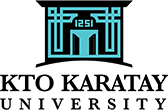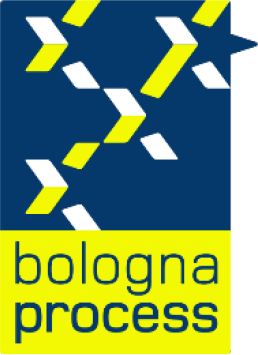Medical Imaging Techniques
Course Details

KTO KARATAY UNIVERSITY
Vocational School of Medical Services
Programme of Medical Imaging Techniques
Course Details
Vocational School of Medical Services
Programme of Medical Imaging Techniques
Course Details

| Course Code | Course Name | Year | Period | Semester | T+A+L | Credit | ECTS |
|---|---|---|---|---|---|---|---|
| 02921005 | Nuclear Medicine | 1 | Spring | 2 | 2+0+0 | 3 | 3 |
| Course Type | Elective |
| Course Cycle | Associate (Short Cycle) (TQF-HE: Level 5 / QF-EHEA: Short Cycle / EQF-LLL: Level 5) |
| Course Language | Turkish |
| Methods and Techniques | - |
| Mode of Delivery | Face to Face |
| Prerequisites | - |
| Coordinator | - |
| Instructor(s) | Prof. Kemal ÖDEV |
| Instructor Assistant(s) | - |
Course Content
SPECT-CT and PET-CT (Positron Emission Tomography-Computerized Tomography) Imaging, Pulmonary and Cardiac Scintigraphy, Digestion, Nuclear Medicine Physics, Nuclear Medicine Terminology, General Radiopharmaceuticals, Special Radiopharmas and Radiopharmaceuticals, Gamma Camera Imaging Methods, System Scintigraphy, Urogenital System Scintigraphy, Central Nervous System and Endocrine System Scintigraphy, Skeletal System Scintigraphy, Radiation Detectors and In Vitro Tests (Thyroid Uptake Test, C-14 Urea Breath Test), Bone Mineral Densitometry Measurement, TAEK Radiation Safety Rules for Nuclear Medicine
Objectives of the Course
This course is aimed at students; Gamma Camera and PET-CT imaging techniques in classroom and hospital settings.
Contribution of the Course to Field Teaching
| Basic Vocational Courses | X |
| Specialization / Field Courses | X |
| Support Courses | |
| Transferable Skills Courses | |
| Humanities, Communication and Management Skills Courses |
Relationships between Course Learning Outcomes and Program Outcomes
| Relationship Levels | ||||
| Lowest | Low | Medium | High | Highest |
| 1 | 2 | 3 | 4 | 5 |
| # | Program Learning Outcomes | Level |
|---|---|---|
| P1 | Has the knowledge to evaluate and apply shooting positions related to the field of medical imaging techniques, technical infrastructure and physics principles of imaging devices, radiation safety and radiation protection rules, pharmacological structures of contrast agents, side effects and risk factors, and uses applied knowledge. | 5 |
Course Learning Outcomes
| Upon the successful completion of this course, students will be able to: | |||
|---|---|---|---|
| No | Learning Outcomes | Outcome Relationship | Measurement Method ** |
| O1 | Ability to express the necessary theoretical knowledge in imaging processes in the field of medical imaging techniques. | P.1.1 | 1 |
| O2 | Ability to understand the application requirements of imaging processes in the field of medical imaging techniques by associating them with theoretical foundations. | P.1.2 | 1 |
| O3 | Ability to apply theoretical knowledge of imaging processes in the field of medical imaging techniques on the patient. | P.1.3 | 1 |
| O4 | Ability to compare and analyze the application results of different approaches in imaging processes in the field of medical imaging techniques. | P.1.4 | 1 |
| O5 | Ability to develop strategies in imaging processes in the field of medical imaging techniques. | P.1.5 | 1 |
| O6 | Ability to evaluate the information obtained in the field of medical imaging techniques. | P.1.6 | 1 |
| ** Written Exam: 1, Oral Exam: 2, Homework: 3, Lab./Exam: 4, Seminar/Presentation: 5, Term Paper: 6, Application: 7 | |||
Weekly Detailed Course Contents
| Week | Topics |
|---|---|
| 1 | Introducing Nuclear Medicine Branch |
| 2 | Introduction to history and atom physics |
| 3 | Interaction of radioactive decay types and radiation with matter |
| 4 | Radioactivity units and radionuclide units |
| 5 | Device information |
| 6 | Radiation biology |
| 7 | Midterm exam- Radiation protection |
| 8 | Radiation protection |
| 9 | Radiopharmacy general, special |
| 10 | Skeletal system, tumor imaging |
| 11 | Heart, respiratory system imaging |
| 12 | Endocrine system and kidney imaging |
| 13 | Gastrointestinal system, infection imaging |
| 14 | Central nervous system imaging |
Textbook or Material
| Resources | Ders Notları |
| Nükleer Tıp Ders Kitabı |
Evaluation Method and Passing Criteria
| In-Term Studies | Quantity | Percentage |
|---|---|---|
| Attendance | - | - |
| Laboratory | - | - |
| Practice | - | - |
| Field Study | - | - |
| Course Specific Internship (If Any) | - | - |
| Homework | - | - |
| Presentation | - | - |
| Projects | - | - |
| Seminar | - | - |
| Quiz | - | - |
| Listening | - | - |
| Midterms | 1 | 40 (%) |
| Final Exam | 1 | 60 (%) |
| Total | 100 (%) | |
ECTS / Working Load Table
| Quantity | Duration | Total Work Load | |
|---|---|---|---|
| Course Week Number and Time | 14 | 2 | 28 |
| Out-of-Class Study Time (Pre-study, Library, Reinforcement) | 2 | 6 | 12 |
| Midterms | 1 | 24 | 24 |
| Quiz | 0 | 0 | 0 |
| Homework | 0 | 0 | 0 |
| Practice | 0 | 0 | 0 |
| Laboratory | 0 | 0 | 0 |
| Project | 0 | 0 | 0 |
| Workshop | 0 | 0 | 0 |
| Presentation/Seminar Preparation | 0 | 0 | 0 |
| Fieldwork | 0 | 0 | 0 |
| Final Exam | 0 | 0 | 0 |
| Other | 1 | 26 | 26 |
| Total Work Load: | 90 | ||
| Total Work Load / 30 | 3 | ||
| Course ECTS Credits: | 3 | ||
Course - Learning Outcomes Matrix
| Relationship Levels | ||||
| Lowest | Low | Medium | High | Highest |
| 1 | 2 | 3 | 4 | 5 |
| # | Learning Outcomes | P1 |
|---|---|---|
| O1 | Ability to express the necessary theoretical knowledge in imaging processes in the field of medical imaging techniques. | 5 |
| O2 | Ability to understand the application requirements of imaging processes in the field of medical imaging techniques by associating them with theoretical foundations. | 5 |
| O3 | Ability to apply theoretical knowledge of imaging processes in the field of medical imaging techniques on the patient. | 5 |
| O4 | Ability to compare and analyze the application results of different approaches in imaging processes in the field of medical imaging techniques. | 5 |
| O5 | Ability to develop strategies in imaging processes in the field of medical imaging techniques. | 5 |
| O6 | Ability to evaluate the information obtained in the field of medical imaging techniques. | 5 |
